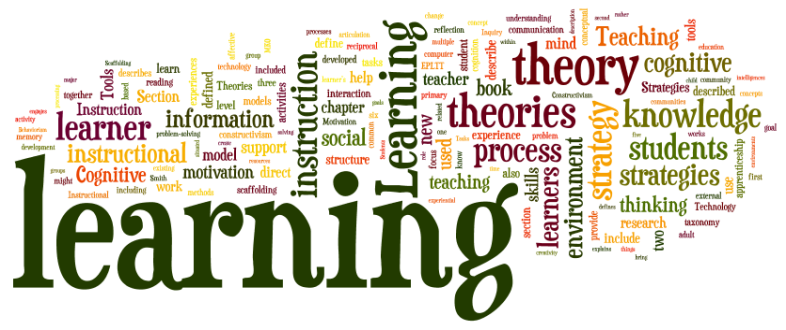
Performance Standard 3: Instructional Strategies:
The teacher promotes student learning by using research-based instructional strategies relevant to the content to engage students in active learning and to facilitate the students’ acquisition of key knowledge and skills.
|
Performance Indicators at the Level III Level
|
|
3.1 Engages students in active learning and maintains interest.
3.2 Builds upon students’ existing knowledge and skills.
3.3 Reinforces learning goals consistently throughout the lesson.
3.4 Uses a variety of research-based instructional strategies and resources.
3.5 Effectively uses appropriate instructional technology to enhance student learning.
3.6 Communicates and presents material clearly, and checks for understanding.
3.7 Develops higher-order thinking through questioning and problem-solving activities.
3.8 Engages students in authentic learning by providing real-life examples and interdisciplinary connections
|
|
Performance Rubrics
|
|
Level I
|
Level II
|
Level III
|
Level IV
|
|
The teacher candidate does not use research-based instructional strategies, nor are the instructional strategies relevant to the content area. The strategies do not engage students in active learning or acquisition of key skills.
|
The teacher candidate inconsistently uses research-based instructional strategies. The strategies used are sometimes not appropriate for the content area or for engaging students in active learning or for the acquisition of key skills.
|
The teacher candidate consistently promotes student learning by using research-based instructional strategies relevant to the content to engage students in active learning, and to facilitate the students’ acquisition of key skills.
|
The teacher candidate continually facilitates students’ engagement in metacognitive learning, higher-order thinking skills, and application of learning in current and relevant ways. (Teacher candidates rated as Exemplary continually seek ways to serve as role models or teacher leaders. This level is not intended for formative assessments of teacher candidates and may only be used in the summative assessment with proper documentation of the teacher candidate’s consistent performance at this level.)
|
|
Examples of Evidence/Artifacts to demonstrate performance on this standard:
|
- Provides opportunities for students to create, present, research, and problem solve.
- Incorporates teaching strategies consistent with research-based best practices.
- Provides opportunities for guided practice with relevant student feedback.
- Uses technology, as relevant to the lesson.
- Checks students for understanding.
- Uses higher order questioning.
- Engages students in authentic learning by providing real-life connections.
- Employ a variety of techniques and instructional strategies to enhance student motivation and decrease discipline problems.
- Think through likely misconceptions that may occur during instruction and monitor students for these misconceptions.
- Give clear examples and offer guided practice.
- Use wait time during questioning.
- Stress meaningful conceptualizations.
- Connect the learning process and outcomes to authentic contexts
|
|
What it is:
|
What it isn't:
|
- Building and sustaining student engagement is relevance of the instruction.
- Making instruction relevant to real-world problems.
- Self-reflecting about their own classroom instruction.
- Encouraging students to respond to questions and activities that require them to discover and assimilate their own understanding, rather than to simply memorize material.
- Staying involved with the lesson at all stages so that adjustments can be made based on feedback from the students.
- Using a variety of instructional strategies, as no one strategy is universally superior with all students.
- Using research-based strategies to enhance the time students spend with teachers by making instruction student-centered.
- Involving students in appropriate and challenging learning activities, such as cooperative learning, to enhance higher order thinking skills.
- Knowing that instructional strategies that use students’ prior knowledge in an inquiry-based, hands-on format facilitate student learning.
- Using remediation, skills-based instruction, and differentiated instruction to meet individual student’s learning needs.
- Using multiple levels of questioning aligned with students’ cognitive abilities.
- Creating a range of products that provide evidence of learning in a unit.
- Using multiple strategies in learning new concepts.
- Taking reasonable risks in responding, questioning, and/or producing products that reflect higher order thinking.
- Using critical thinking skills to plan and conduct research, manage projects, solve problems, and make informed decision.
- Demonstrating an ease of use with a wide variety of technology and software resources to complete assignments and show understanding of learning.
- Describing learning expectations for which they are responsible, either in their own language or the language of the standard.
|
- One size fits all
- Non-reflective
- Boring for students
- Completely teacher-centered
- Concerned only with test preparations
- Textbook driven
- Low-level questioning only
|
|
Sample Questions for Conferencing:
|
- What is an example of a research based strategy you have used to successfully engage students?
- In what ways have you sought to keep instruction focused at a higher level of thinking?
- In what ways do you use technology and resources to promote higher-order thinking?
- How do you challenge special education students to use higher-order thinking skills?
- What is an example of a lesson you developed that incorporated technology?
- How have you created, modified, or used rubrics to communicate expectations?
|
Reference and for more information visit
https://www.gadoe.org/School-Improvement/Teacher-and-Leader-Effectiveness/Documents/TKES%20Fact%20%20Sheets%207-11-2012.pdf
